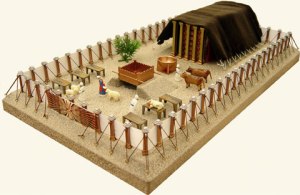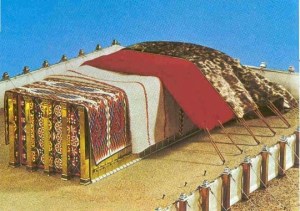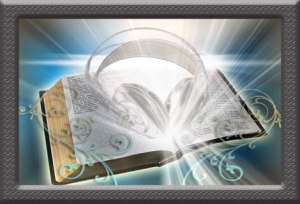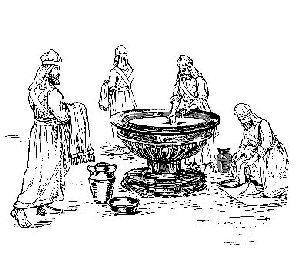THE GATE
 The width of the court on the east side shall be fifty cubits. The hangings on one side of the gate shall be fifteen cubits, with their three pillars and their three sockets. And on the other side shall be hangings of fifteen cubits, with their three pillars and their three sockets. “For the gate of the court there shall be a screen twenty cubits long, woven of blue, purple, and scarlet thread, and fine woven linen, made by a weaver. It shall have four pillars and four sockets.
The width of the court on the east side shall be fifty cubits. The hangings on one side of the gate shall be fifteen cubits, with their three pillars and their three sockets. And on the other side shall be hangings of fifteen cubits, with their three pillars and their three sockets. “For the gate of the court there shall be a screen twenty cubits long, woven of blue, purple, and scarlet thread, and fine woven linen, made by a weaver. It shall have four pillars and four sockets.
Ex. 27:13-16
Three entrances are associated with the Tabernacle of Moses – the Gate to the Outer Court, the door to the Holy Place and the Veil at the Holy of Holies.
There was only one way to enter into the Tabernacle’s enclosure – through the Gate which was clearly marked and distinguishable from all the other hangings that made up the fence of the outer court. The gate was made of fine linen interwoven with blue, purple and scarlet thread.
Ten pillars formed the foundation for the eastern and western parts of the fence. Ten is God’s number symbolizing the perfection of divine order. We have the Ten Commandments; God created man with ten fingers and ten toes. Additionally, Jesus’ model prayer is completed in ten clauses, and God requires the first one-tenth of our increase to be returned to Him.
The Tabernacle gate was located on the east end, and stood in the middle of the fence. There were three pillars on one side and three on the other while the gate itself hung on four pillars. The number three, as we discussed previously, is symbolic of God’s divine order. When I look at this I see an absolutely beautiful picture of redemption. The Father, Son and Holy Spirit on the one hand were separated from man, who is spirit, soul and body. But Jesus was stretched and suspended on that Cross forming the Bridge that gave us access again to the presence of God! Hallelujah!!
Each color in the gate was significant.
BLUE
Blue signifies the commandments of the Lord.
“Speak to the children of Israel: Tell them to make tassels on the corners of their garments throughout their generations, and to put a blue thread in the tassels of the corners. And you shall have the tassel, that you may look upon it and remember all the commandments of the LORD and do them. – Numbers 15:38, 39
It also speaks of the priesthood.
“You shall make the robe of the ephod all of blue. There shall be an opening for his head in the middle of it; it shall have a woven binding all around its opening, like the opening in a coat of mail, so that it does not tear. – Exodus 28: 31, 32
Blue is symbolic of the revelation of God, and of heaven itself.
…and they saw the God of Israel. And there was under His feet as it were a paved work of sapphire stone, and it was like the very heavens in its clarity. – Ex 24:10
Therefore the blue in the gate tells us of Jesus, our Great High Priest who fulfilled all the Law, and who came to earth to reveal who the Father is and what heaven is like.
PURPLE
Purple speaks of royalty, authority and rulership. Kings and nobles of that day were dressed in robes of purple.
Now the weight of the gold earrings that he requested was one thousand seven hundred shekels of gold, besides the crescent ornaments, pendants, and purple robes which were on the kings of Midian, and besides the chains that were around their camels’ necks. – Judges 8:26
The king spoke, saying to the wise men of Babylon, “Whoever reads this writing, and tells me its interpretation, shall be clothed with purple and have a chain of gold around his neck; and he shall be the third ruler in the kingdom.” – Daniel 5:7b
And the soldiers twisted a crown of thorns and put it on His head, and they put on Him a purple robe. – John 19:2
Jesus the Christ is King of Kings and Lord of Lords!! – Revelation 19:16
SCARLET
Scarlet speaks of sin…
Though your sins are like scarlet, they shall be as white as snow; Though they are red like crimson, they shall be as wool. – Isaiah 1:18
…and Jesus’ sacrifice
Therefore Jesus also, that He might sanctify the people with His own blood, suffered outside the gate. – Hebrews 13:12
It also denotes cleansing from sin…
But if we walk in the light as He is in the light, we have fellowship with one another, and the blood of Jesus Christ His Son cleanses us from all sin. – 1 John 1:7
… of Jesus redeeming us through His Blood
…you were not redeemed with corruptible things, like silver or gold, from your aimless conduct received by tradition from your fathers, but with the precious blood of Christ, as of a lamb without blemish and without spot. – 1 Peter 1:18, 19
…and of life in Christ
Then Jesus said to them, “Most assuredly, I say to you, unless you eat the flesh of the Son of Man and drink His blood, you have no life in you. – John 6:53
What a glorious picture of Jesus that Gate is!!
“I am the gate; whoever enters through me will be saved.”
John 10:9
Next: The Brazen Altar
 Commingling literally means “mixing together”. If, for example, a friend puts you in care of his funds, and if you decide to place his funds in your own account then the money is mixed together. This creates a breach of trust, because eventually it would be difficult to determine which funds belong to whom. His funds must be set apart in an account dedicated for him only.
Commingling literally means “mixing together”. If, for example, a friend puts you in care of his funds, and if you decide to place his funds in your own account then the money is mixed together. This creates a breach of trust, because eventually it would be difficult to determine which funds belong to whom. His funds must be set apart in an account dedicated for him only.
 In these final days satan’s devises are more and more subtle, and therefore more difficult to discern. A laptop or Ipad in and of itself is not a bad thing. However, when it is used, for the sake of convenience, in a position that God has ordained as holy, it becomes a profane thing.
In these final days satan’s devises are more and more subtle, and therefore more difficult to discern. A laptop or Ipad in and of itself is not a bad thing. However, when it is used, for the sake of convenience, in a position that God has ordained as holy, it becomes a profane thing. 


























